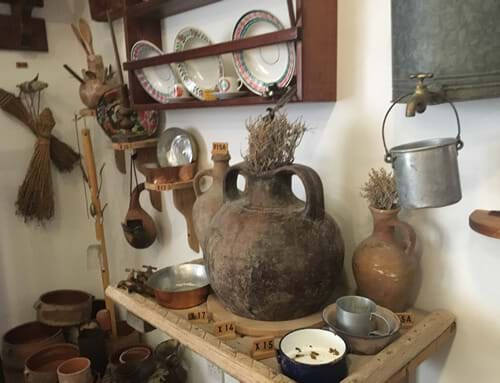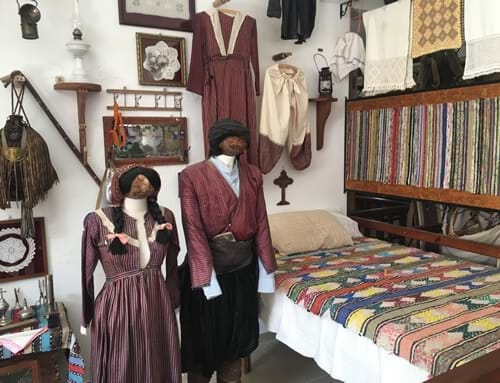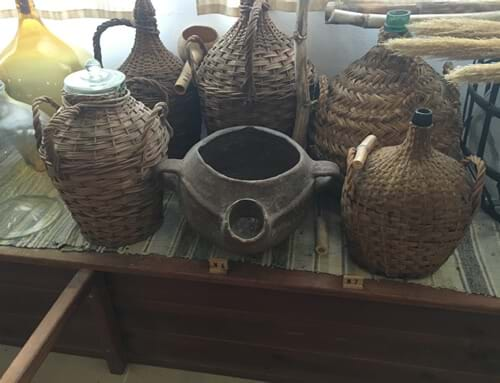While most contemporary Cypriots live in urban areas, much of Cypriot culture—its cuisine, crafts, and pastimes—is rooted in village life as it was experienced at least seventy-five years ago. To get a better sense of this heritage, head to the Steni Museum of Village Life, which collects artefacts from the period of 1800 to 1945. Villagers made good use of locally available materials. Structures, for example, were built using wooden beams, stone pediments, and mud bricks of clay, straw, and water formed in wooden frames. You can trace the whole process of cultivating grain through tools: see harnesses and ploughs, sickles, threshers, sieves, mills, rolling pins, and proving boards for letting bread dough rise. Though much agricultural produce was consumed by villagers, some was traded—look for scales and a set of sticks that served as a form of receipt for the sale of carobs. Inside the home, food was prepared and stored in ceramic, glass, and metal vessels as well as in baskets and dried pumpkins. Most households had a loom for weaving cloth; examine the fully operational loom from 1900 along with a collection of tools (combs, spindles, shuttles, bobbins), silkworm cocoons, threads, and cloths. Some especially inventive implements include a clay pot for milking goats and sheep, a rat trap, and a bee smoker. Though a pair of pliers for tooth extraction hints at primitive conditions, examples of a radio, a gramophone, and a sewing machine indicate growing prosperity. The village is just six kilometres by car from Polis.


